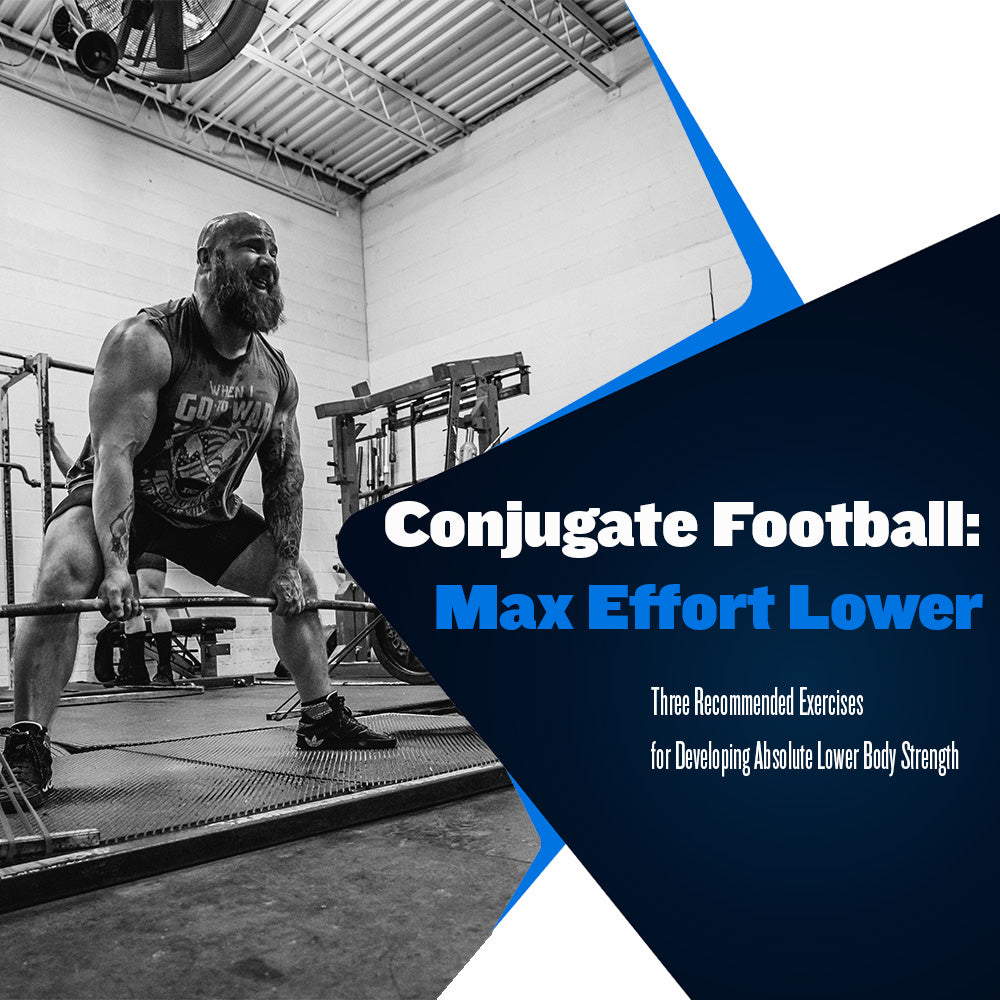Conjugate Football: Max Effort Lower

Football is a sport that requires tremendous levels of strength, speed, endurance, and resilience to reach the highest competitive levels. It is a game known for violent impacts, with many modern players weighing over 300lbs capable of running sub-5-second 40-yard dash times with ease.
It's safe to say that the game has evolved, and the players have evolved, but has the training evolved? You have to wonder, how well has the average football player been served by their strength and conditioning program?
Often, strength coaches entrusted with preparing athletes fear heavy weights, opting to avoid focusing on specifically improving absolute strength. This is due to the unsubstantiated belief that training at 90% + of one-rep max increases the likelihood of injury.
While max effort training is intense, the danger associated with the training is decided based on the athlete's preparedness. As long as the athletes you are working with have experience with weight training and possess a baseline understanding of the movements, you will have no issue introducing them to max effort training.
The successful implementation of max-effort training for football players calls for intelligent programming combined with proper instruction. This means that you are selecting the appropriate exercises, using the correct rep and intensity ranges, and adequately educating athletes on the execution and intent of each exercise.
Here are some max effort exercises we use at Westside Barbell to improve a football player's lower body absolute strength:
Anderson-Style Giant Cambered Bar Goodmornings
Goodmornings, specifically giant cambered bar goodmornings, are among the best exercise choices when improving lower body absolute strength. Proper execution of heavy goodmornings can be challenging to manage for the strongest powerlifters, mainly because of the control and reversal strength it takes to transition from the eccentric phase to the concentric phase of the lift.
The force applied to the lower back during the eccentric phase can wreak havoc on the lumbar spine when performed incorrectly. Many athletes lack experience performing heavy goodmornings, and this exercise is an excellent way to introduce them to the movement while removing much of the risk.
Fortunately, goodmornings are highly effective and are relatively easy to recover from when performed correctly. We recommend working up to a top set single or triple as far as how to program this exercise. The goal should be to set or break a former PR while leaving a set in the tank.
Sumo Deadlift
The sumo deadlift will provide an athlete with the hip, glute, and leg development needed to increase absolute strength while also improving an athlete's ability to apply force laterally. This is incredibly important to a sport like football, where having a solid base and the ability to drive your opponent in any direction decides what happens at the line of scrimmage.
It is recommended that athletes begin with basic sumo deadlifts before adding in special exercises. Focus on developing athletes' sumo form and execution to ensure maximally effective training. Exercise execution ultimately dictates the effectiveness of the workout.
Once proper form and execution have been established, you can begin adding in special exercises. We recommend sumo pulls from a deficit, mats, or rack. You can also add bands or chains. For athletes, we typically recommend the use of bands.
It would be best to work up to a max effort single or triple anytime this exercise is performed.
Front Squat
The front squat is a great way to focus on training the anterior muscles of the lower body and improve a football player's strength and stability on the playing field. The front squat places great demand on the anterior muscles of the leg, and you will also improve the strength and stability of your trunk.
Front squats should be performed using crossed arms when training athletes. Unless the athletes being trained are Olympic weightlifters, there is no need to increase the stress and wear experienced by the wrists.
To ensure the exercise is executed correctly, athletes must adequately brace the trunk and maintain upper back stability to elevate the chest and complete the lift. As with the other two exercises mentioned in this article, the quality of execution dictates the effectiveness and the injury risk associated with the exercise.
Absolute Strength Improves All Things
You may be asking yourself, "why should a football player lift heavy? They're not going to deadlift 700lbs on the field." When an athlete's absolute strength capacity is increased, the capacity of all other strengths increases as well.
This means that if you increase absolute strength, you will have the ability to raise other strengths to higher levels. Absolute strength is King; your ability to maximize speed or explosive power depends on how much absolute strength you possess.
Nowadays, it is popular to perform exercises that look like Ninja Warrior obstacle courses. Coaches run from max effort training because it is "dangerous," then they have their athletes standing on a Bosu ball on one leg performing a pistol squat with a safety squat bar. Sports specific, right?
You have to be strong, fast, and resilient no matter the sport. To maximize these qualities, you must include max effort training weekly. The motor unit recruitment achieved lifting weights 90% + cannot be achieved any other way. Improve the absolute strength of the athlete, raise the potential athletic ability of the athlete
Be on the lookout for an article covering basic max effort lower and upper programming strategies for football players.
Sources:
Simmons, L. (2015) Special Strength Development for All Sports. Westside Barbell.
Simmons, L. (2007). Westside Barbell Book of Methods. Westside Barbell.
Verkhoshansky, Y., & Siff, M. C. (2009). Supertraining. Verkhoshansky.




